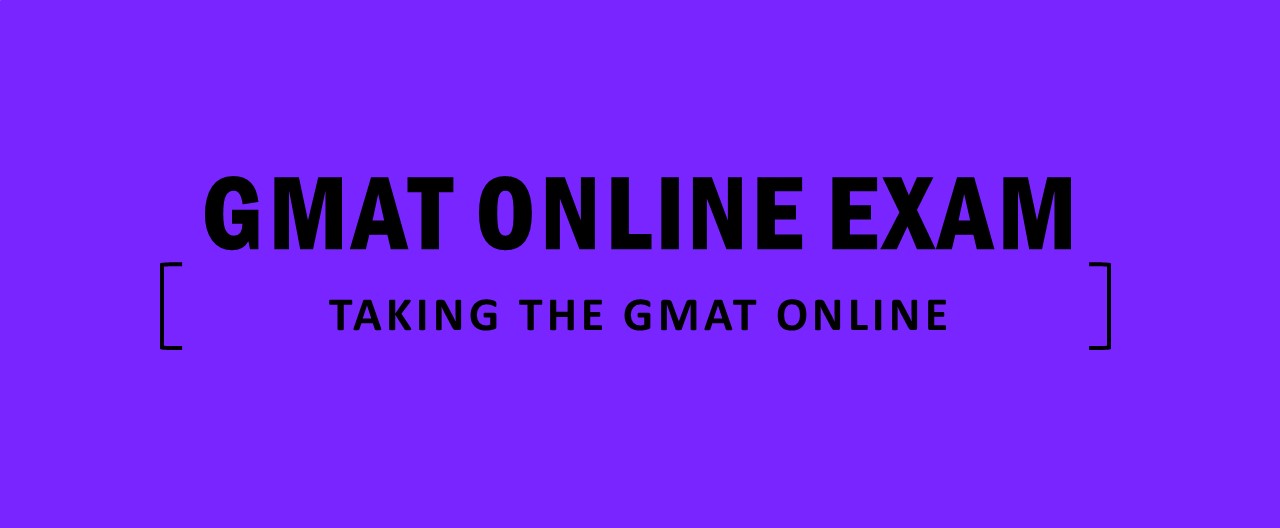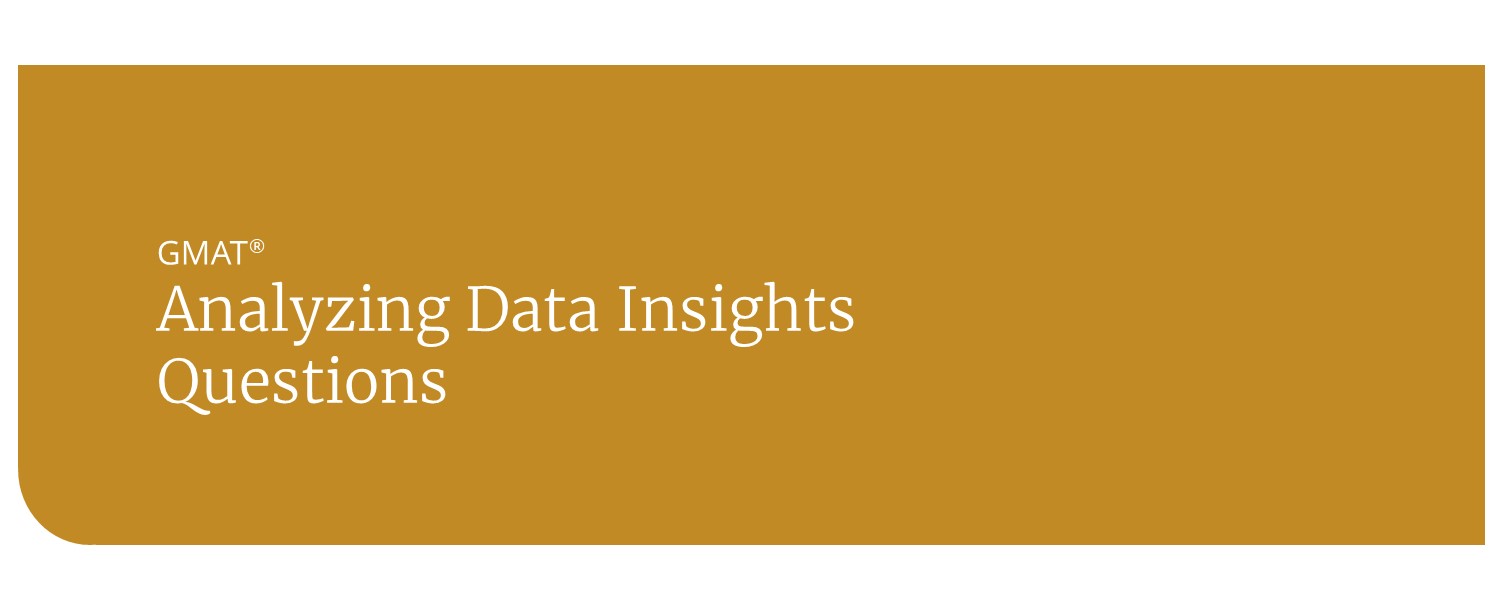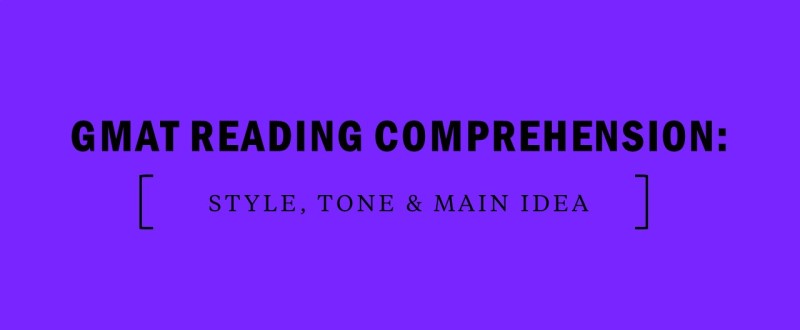Taking the GMAT Online
Looking to take the GMAT? The Graduate Management Admissions Council (GMAC) offers a take-at-home option for the GMAT™ Exam called the GMAT Online exam.
TABLE OF CONTENTS
- Who Can Take The Exam
- When The Exam Is Available
- How To Register
- Accommodations
- Cost
- Format
- Workspaces
- Equipment and Technology
- Whiteboards
- Scores
- How To Prep
- FAQs
Who Can Take The GMAT Online Exam?
The GMAT Online exam is offered in most countries. There are a few countries that do not allow residents to take the GMAT Online exam due to local regulations, including:
- Mainland China
- Cuba
- Iran
- North Korea
- Sudan
When Can I Take the GMAT Online?
The GMAT Online exam is available to eligible test-takers 24 hours a day, 7 days a week.
How To Register For the GMAT Online
To register for the GMAT Online exam, just sign into your mba.com account and follow the instructions.
GMAT Online Accommodations
The process for requesting accommodations is the same for the online and testing-center versions of the GMAT. For the GMAT Online, GMAC provides accommodations that are feasible within the online format, including extended time and extended breaks. Certain test-taking accommodations, such as a human reader to accommodate visual impairments, can be provided only in a GMAT testing center.
To request GMAT accommodations, submit the Test Accommodation Request Form on the mba.com website.
GMAT Online Cost
The GMAT Online exam costs $300 USD in most of the world, but certain countries have local pricing.
GMAT Online Format
The GMAT Online format is exactly like the testing-center GMAT. In both formats, you will:
- Complete the same three sections (Quant, Verbal, Data Insights) with the same number of problems and the same time limit
- Can take the three sections in whatever order you prefer
- Get one 10-minute break
- See your scores on screen immediately after the exam is over (for everything except the essay)
GMAT Online Workspaces
Before you start the GMAT Online, a proctor will ask you to use your webcam to show a 360-degree view of your workspace. They need to verify that your test-taking environment is private and that no one else is in the room with you.
For the GMAT Online, you will need a workspace that is:
- Clear of all books, papers, writing utensils, and electronic devices, with the exception of the computer on which you are taking the exam and the approved whiteboard you’ll use for your scratch work
- Illuminated well so that you are clearly visible to your proctor for the entire exam
GMAT Online Expert Tip: If you leave the field of view of your webcam during the test-taking portion of the exam, your test will be ended and your score canceled. You are allowed to leave your seat on your breaks.
GMAT Online Equipment and Technology
To take the GMAT Online, you will need to provide the necessary equipment and technology, including:
- A desktop or laptop computer with a relatively recently updated operating system
- A webcam, microphone, and speakers/audio
- A private workspace
- A good internet connection
A computer with a corporate firewall or VPN connection cannot be used to take the GMAT Online. You also cannot take the exam on a tablet or mobile phone.
[ RELATED: GMAT system requirements ]
GMAT Online Whiteboards
During the GMAT Online exam, you can use both a digital and a physical whiteboard for your scratch work. The digital whiteboard is provided by GMAC; you will have to provide the physical whiteboard, which must be:
- One erasable whiteboard
- Plain white (no grid marks or other markings and no color other than white)
- No larger than 12 x 20 inches (30 x 50 cm)
You can have up to 2 dry erase markers and 1 whiteboard eraser. Check your markers before you log in for the test! If yours are older, consider using new ones—you don’t want them to run out during the test.
GMAT Online Expert Tip: The physical whiteboard can be double-sided, so take advantage of this rule! You’ll double your surface area / halve the amount of time you spend erasing your work.
[ RELATED: GMAT whiteboard requirements ]
Is It Better To Take the GMAT Online or At a Testing Center?
Whether you take the GMAT Online or in a testing center is based entirely on your preference; there is no objective advantage to either test format. There are two important factors to take into consideration as you decide.
- Do you have a private, quiet workspace and the necessary equipment and internet access?If not, take the GMAT in a testing center.
- Do you feel strong test anxiety on test day, to the point that your brain is overwhelmed and you significantly underperform compared to your practice tests? If so, consider taking the GMAT Online. A familiar environment can help you to stay calm enough to focus better on test day.
If strong test anxiety is not an issue for you, consider taking the GMAT in the testing center. A reasonable level of nervous energy is actually helpful; it will give you a boost of much-needed adrenaline to help you stay focused and alert on test day. If you take the test at home, you could find yourself too relaxed and actually underperform!
If the above factors don’t apply in your case, choose whichever testing format you prefer.
GMAT Online Scores
GMAT Online scores are exactly the same and delivered in the same way as traditional GMAT scores. In both settings, GMAT scores appear on your computer screen immediately after the exam is over (for everything except the essay).
Your official GMAT score report will typically be available in your mba.com account within 7 business days after you take the exam (though officially it can take up to 20 days). GMAC will send you an email to let you know when your official report is available in your mba.com account.
Your GMAT exam fee includes sending your official score report to up to 5 schools. If you take the GMAT Online, you have up to 48 hours after the exam to choose 5 schools. If you take the GMAT in a testing center, you’ll choose these 5 schools while you are in the testing center to take your exam.
You can also send additional score reports to schools (for a fee) at any time as long as your scores are still valid. Your GMAT Online scores are valid for 5 years after the exam date. Log into your mba.com account to send reports to additional schools.
How To Prep for the GMAT Online Exam
The GMAT Online and the GMAT given in a testing center are the same test, so your studies will be almost identical, regardless of which format you choose. In fact, at the start, don’t assume that you will take it one way or the other; prepare to take it either way to give yourself the most flexibility.
Expect to spend the same amount of time preparing for the GMAT regardless of testing format. Students looking for a highly competitive score (680+) or an especially high score increase (250+ points) will typically spend an average of 100 to 200 hours over 3 to 6 months.
As you prepare for the exam, you’ll periodically take practice tests. When you take a practice test, mimic the official testing conditions as much as possible. The only difference between the two formats is the scratch paper. For the GMAT Online, you’ll have access to both an on-screen whiteboard and a physical whiteboard—that you have to buy yourself. The physical whiteboard is limited in size (12 by 20 inches or 30 by 50 centimeters), so you’ll need to erase as you continue through the test.
For the test-center GMAT, you won’t have the on-screen whiteboard but you will have a booklet of 5 laminated sheets of legal-sized paper—enough area to complete one entire section of the test. When you fill it up, you can swap out your booklet for a new one. (Ideally, do this on the breaks so that you don’t have to interrupt any of your test sections.)
When you take practice exams, sometimes follow the testing center protocols and sometimes follow the online protocols, so you’ll be ready either way. You might even end up taking the official test in both formats.
GMAT Online Prep Tip: Take practice tests under full official conditions, including time limits, breaks, and scratch paper. Mimic the official test so that you’re as prepared as possible for test day!
[ RELATED: How to make the most of both whiteboards on the GMAT ]
Practicing Tips for GMAT Online
There are three big things to think about when studying for the GMAT. First, you need to know how the different GMAT problem types work. Second, you need to know the content tested on the GMAT. And third, you need to know how time management and logistical items (such as your scratch paper/whiteboard) factor into the decisions that you make while taking the test.
Learn GMAT Problem Types
Different types of problems appear in the multiple-choice sections of the GMAT. Each problem type has its own specific rules for how it works, and each type also has its own strategies—how to solve more efficiently, how to minimize careless mistakes, and so on.
In the Verbal section, the two types of problems are:
- Critical Reasoning (CR)
- Reading Comprehension (RC)
In the Quantitative section, there is one problem type:
- Problem Solving (PS)
In the Data Insights section, the five problem types are:
- Graphs
- Tables
- Multi-Source Reasoning (MSR)
- Two-Parts
- Data Sufficiency (DS)
To learn more about these problem types and to gain access to a free practice test, sign up for Manhattan Prep’s Free GMAT Starter Kit.
GMAT Online Expert Tip: After you finishing solving a problem, analyze it to find takeaways and figure out how you’re going to remember and successfully reuse that same skill or knowledge on a future problem.
[ RELATED: Try some free GMAT practice problems ]
Learn GMAT Content
On the Quant section of the GMAT, you’ll need to know high-school level math in the following areas:
- Fractions, decimals, percents, and ratios
- Number Properties, including divisibility, primes, positives, negatives, odds, and evens
- Algebra, including exponents, roots, linear and quadratic equations, and functions
- Word Problems, including stories, rates, statistics, and overlapping sets
On the Verbal section of the GMAT you’ll need to know Critical Reasoning and Reading Comprehension. Both require you to analyze the presented information, but you do not need to study any facts ahead of time. You do, though, need to know how to recognize what kind of analysis the specific problem asks for—make an inference? Articulate a specific detail? Strengthen or weaken an argument? Describe the role or function of a specific piece of information? And so on.
The Data Insights section tests the same facts and rules that you’ll see on the Quant and Verbal sections. You don’t need to learn any new facts for DI—but you do need to learn how the complicated problem types work.
We’ve made our Foundations of Math and Foundations of Verbal study programs free, so you can get started on your GMAT studies today—no commitment beyond your time. Try it out to get a sense of whether you do want to study for this test and apply to business school.
[ RELATED: Study Foundations of GMAT Math and GMAT Verbal for free ]
Manage Time on the GMAT
The GMAT is an adaptive test; it literally chooses which problems to give you based on how you perform as you take the test. At heart, the GMAT is really a test of your executive reasoning skills.
Further, the test is designed such that you won’t have time to fully answer all of the questions presented to you. Each section will put you under significant time pressure, on purpose; to earn your best possible score, you will actually have to guess quickly on a number of problems in each section.
Why? Because the GMAT is interested in how well you make business decisions—and that includes the ability to recognize when something is a bad business opportunity and the discipline to say, “No, thanks!” Everybody has to do this, even Manhattan Prep instructors, who have all earned 99th percentile scores on the GMAT. How you choose to manage your time and mental energy will have a significant impact on your final score—the single most important thing you can do is to develop a strong executive mindset as you prepare to take this exam. You can read more about how to develop an exec mindset in Manhattan Prep’s Free GMAT Starter Kit.
GMAT Online Expert Tip: In order to maximize your GMAT score, first make the switch from the “school” mindset to the Executive Mindset. Second, learn how to make the best timing decisions as you move through the exam.
Practice Using an Online Whiteboard
If you take the GMAT Online, you’ll have access to an onscreen whiteboard and you can also use your own physical whiteboard. Before test day, practice with the onscreen whiteboard so that you know exactly how to use each tool. In addition, strategize ahead of time about how and when to use the online whiteboard versus the physical whiteboard. Don’t wait till test day to figure it out!
Take Practice Tests
In order to get an accurate estimation of your current scoring level, take GMAT practice tests under realistic testing conditions. Be very precise about the workspace, device, whiteboards, timing, and breaks.
If you have been granted extended time (1.5x or 2x), then also use extended time on your practice tests; both the official practice tests and Manhattan Prep practice tests support extended time.
If you have not yet been granted extended time but are planning to apply, use standard (1x) time until your application has been approved. If you practice with extended time and then are denied that accommodation for some reason, it will be much harder to try to adjust to 1x time at that point.
Re-Taking the GMAT Online
All GMAT test-takers are limited to 5 attempts in a 12-month period and 8 lifetime attempts, regardless of test format (online or in a testing center).
The GMAT Online exam can be taken once every 16 calendar days and the testing center exam can be taken once every 16 calendar days. There is no waiting period if you switch formats—if you take the GMAT Online today, you can take it in a testing center tomorrow.
[ RELATED: Should I Retake the GMAT? ]
GMAT Online FAQs
Most frequently asked questions about the GMAT Online exam.
Can I cancel my scores on the GMAT Online?
You can’t cancel your GMAT Online scores, even though you can cancel your scores when you take the test at a testing center. But they do give you a way to not share your GMAT Online scores with schools. You’ll have two GMAT “transcripts”: one for exams taken in a testing center and one for exams taken online. You can choose to send just one of the transcripts to schools or you can send both.
How long does it take to get GMAT Online scores?
For everything but the essay, your scores will pop up on the screen immediately after you finish the last section of your test. Your official scores (including your essay score) will typically be in your mba.com account in about a week, though officially it can take up to 20 days. They’ll email you when your official scores are ready to view in your mba.com account.
How can I check GMAT Online scores?
Log into your account on mba.com to navigate to your official GMAT scores.
How long do GMAT Online scores last?
GMAT Online scores are good for 5 years from the date of your test, as are test-center GMAT scores.
Are GMAT Online scores accepted everywhere?
Yes, all schools that accept the GMAT accept both the GMAT Online and the test-center GMAT.
Is the GMAT Online a cheaper option?
No, the GMAT Online exam is not a cheaper option than taking the exam at a testing center. In most locations, the online version costs $300 USD, while the testing-center version costs $275 USD (though some areas have location-specific pricing).
Can I Take the GMAT Online on a Mac?
Yes, you can take the GMAT Online with a Mac or PC. You can’t take it on an iPad or other tablet.
Can I use a stylus, pen mouse, or touch screen on the GMAT Online?
You cannot use a stylus, pen mouse, or touch screen on the GMAT Online. You’ll need to use a standard mouse or trackpad.
Can I use two monitors for the GMAT Online?
You cannot use two monitors for the GMAT Online.
Can I Wear Earplugs or Headphones During the GMAT Online?
You cannot wear earplugs or headphones while taking the GMAT Online. If you take the GMAT in a testing center, you can wear earplugs that are provided by the testing center.
What are the GMAT Online tech setup and security checks like?
The security and tech check for the GMAT Online exam takes about 10 minutes, if everything goes smoothly. Sometimes the check needs to be repeated if the initial check fails. You can run a system test at any time.
About 10 to 15 minutes before your appointed start time, log into your mba.com account and navigate to start the exam.
You will use your webcam to perform the ID check and to show the proctor a 360-degree view of your room. Make sure that all books and papers are not within arm’s reach. Any other electronic devices in the room must be turned off and also not within arm’s reach; alternatively, put them in another room.
Your proctor will answer any questions you have. Once you are done speaking with your proctor, the GMAT Online will be launched and your exam will start.
What To Do If You Have a Tech Issue During the GMAT Online?
Overall, the odds of having something go wrong are pretty low but it does happen. If you do have a tech issue and are still connected to the exam, click the button to call the proctor and troubleshoot. The proctors are able to reboot the exam if, for example, the online whiteboard or testing screen freezes—and the test will remember how much time you had remaining in that section. You won’t lose the time it takes to reboot the software.
GMAT Online Expert Tip: Check your Activity Monitor (MAC) or Task Manager (PC) before the exam and shut down any unnecessary applications to limit technical difficulties.
GMAC has said that there is some resilience built into the platform; if your Internet is briefly disconnected or your machine freezes, for example, your exam will likely be able to continue from the point at which you were interrupted.
If, for some reason, it’s not possible to continue the test, GMAC’s security team will review the recording; assuming that the tech issue is verified, the test-taker will be allowed to test again for free and the interrupted test will not count towards your lifetime limit of 8 tests. It can take a week or two for GMAC to verify what happened and tell you the resolution.
If this occurs, you would have to start the test again from the beginning. The same thing would happen if there’s a significant disruption in the testing center—if, for example, the center loses power or Internet for an extended period of time.
GMAT Online Expert Tip: Know how to use your phone as a hotspot so that, if your wired Internet connection goes down, you can try to continue while using your phone as your Internet connection. Your phone will have to be in a different room or physically inaccessible to you, so set up your computer to automatically connect to your phone in the event that your regular Internet connection goes down.





